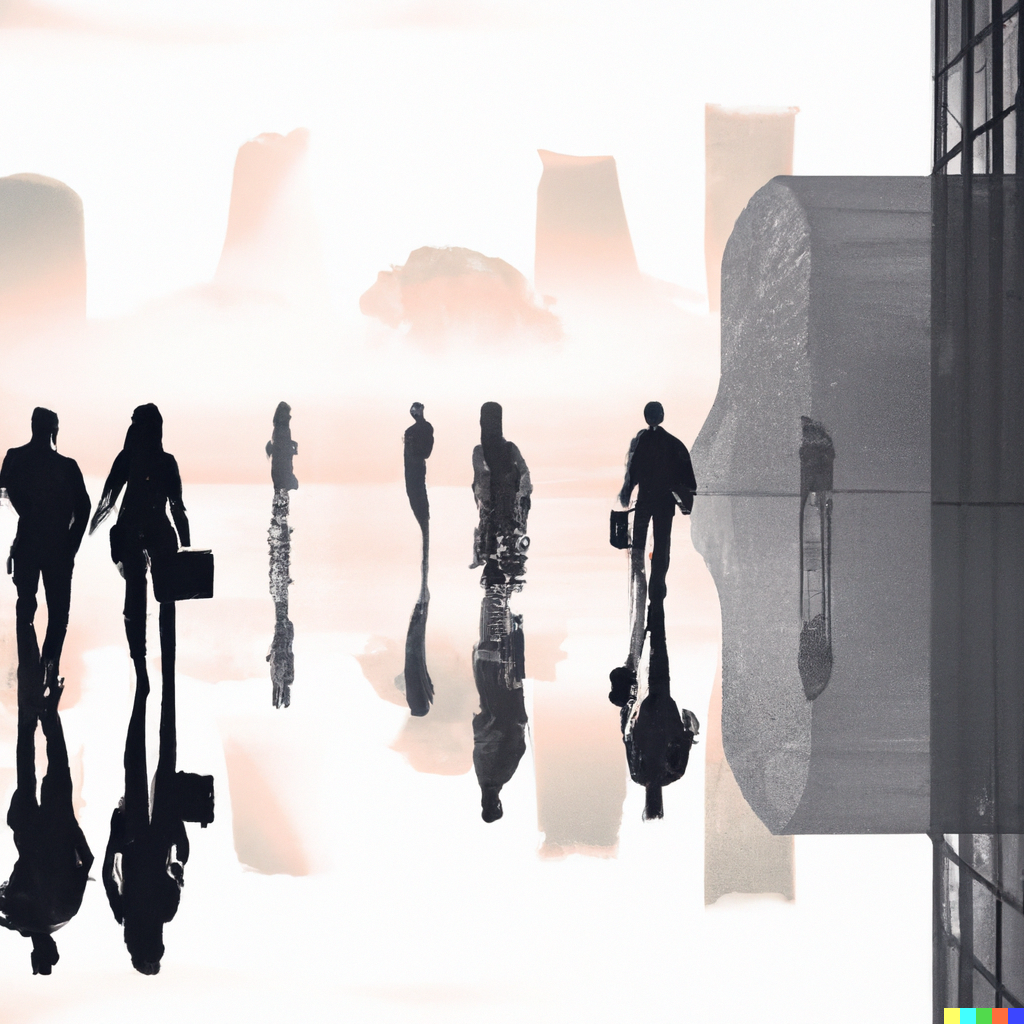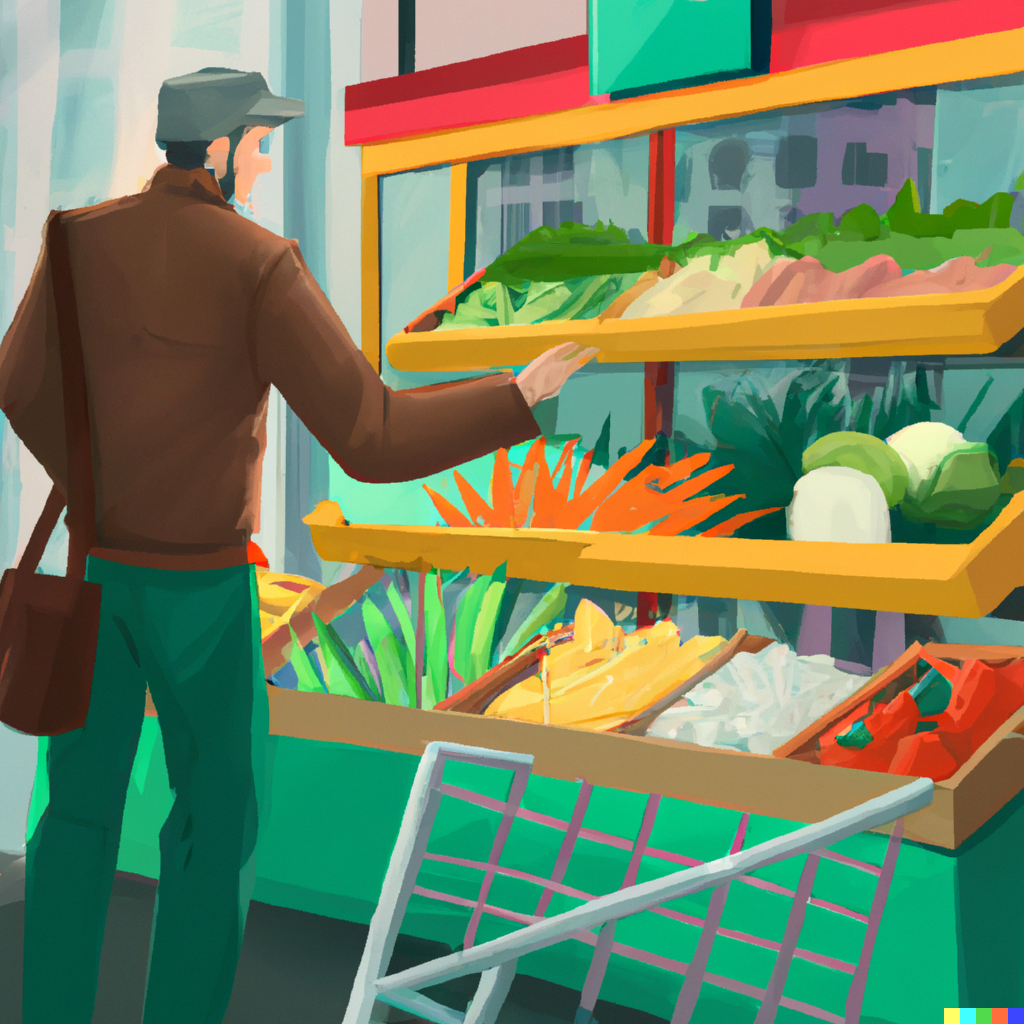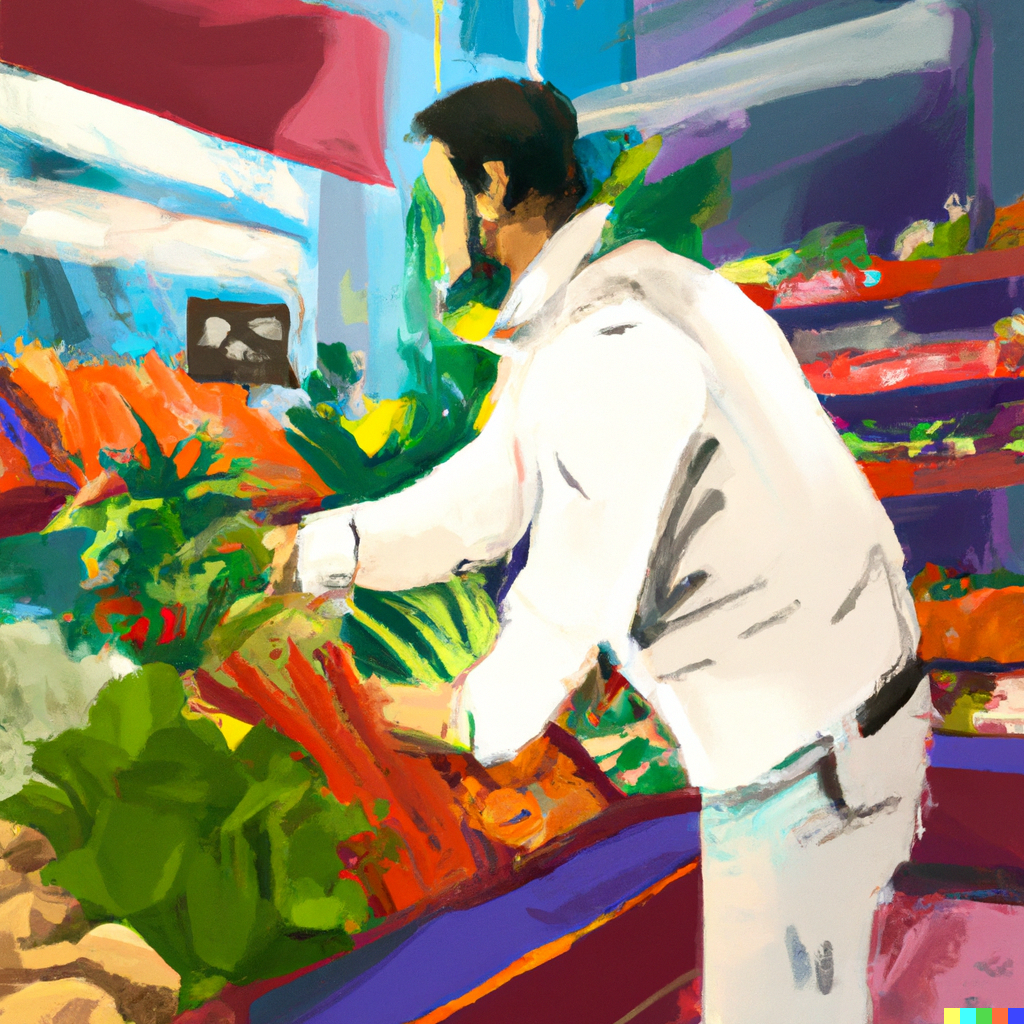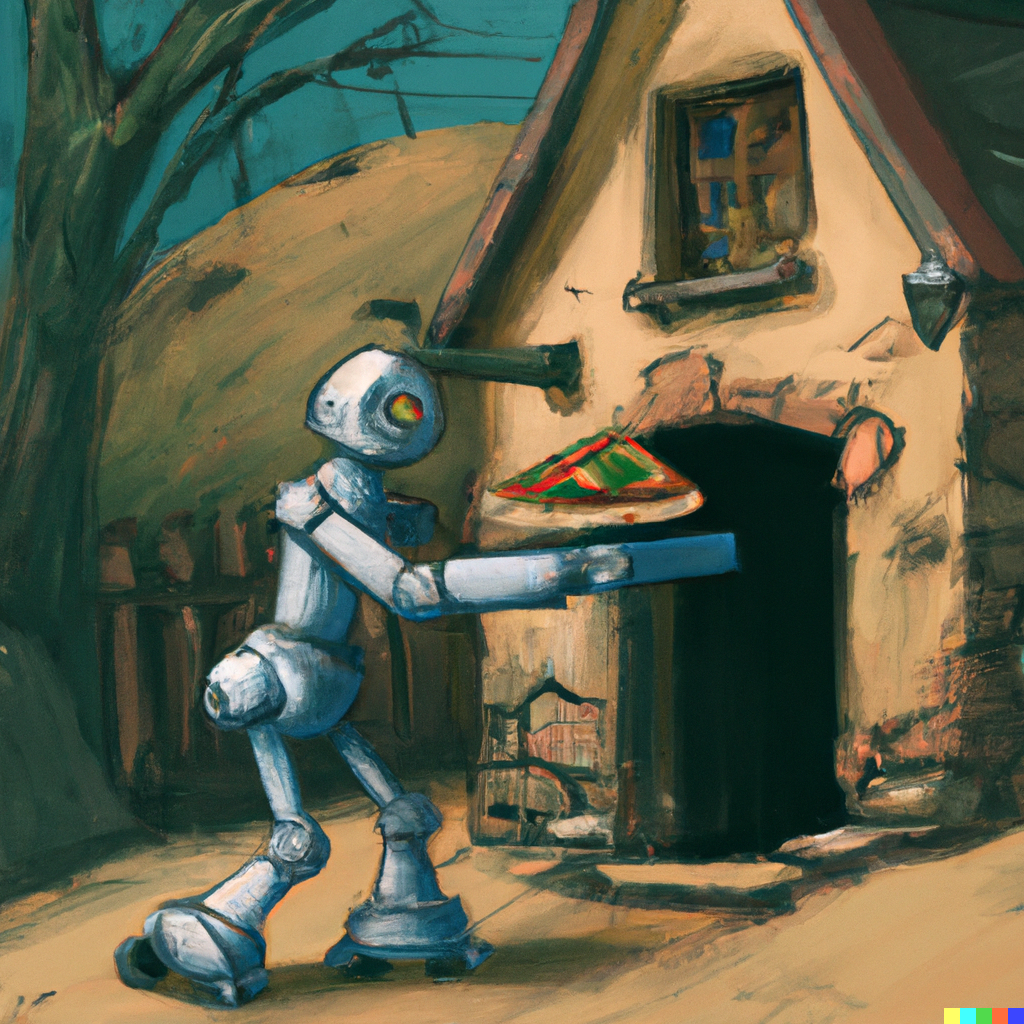The technological revolution is at its peak, and artificial intelligence offers possibilities beyond our wildest dreams. Development, collaboration, and convenience are just some of the things artificial intelligence (AI) can help us. We were at Nancy Rademaker’s lecture!
A few days ago, I tried out the DALL.E AI system, which creates images, graphics, and paintings. The results were quite impressive: the image below, which I own the copyright and ownership of, was generated for only €0.15. All I had to do was to type in: „a classical painting of a medieval Polish knight with a red background.”

As I saw the outcome, I started to think about what the future holds for us; I was scared and deeply impressed at the same time. And I am not the only one thinking about AI; many people in the business scene are scratching their heads about the AI revolution. We visited the „SMART 2023 – Changing reality” event in Budapest and participated in the lecture of Nancy Rademaker, an international keynote speaker who brought the future up close.
According to Rademaker, the technological revolution has arrived in the world of the next normal, where digital living is the new normality. The COVID-19 pandemic brought a huge digital explosion, as isolation forced everyone to use technology actively. Grandmothers video-chatted with their grandchildren; entire companies had to switch to home office overnight, and even the education system was forced to catch up under the new pressure. Technology has always exploded exponentially, but the human brain is too slow and limited to keep up with this exponential growth. Our imagination is simply unable to adapt to reality, and this causes confusion not only in people’s minds but also in the business world.

The new technological revolution is creating new competition in the market, and consumers’ expectations are rising. To complete the picture, businesses today are able to grow steadily, meaning that with innovation and effort a post-peak slowdown can be avoided. In this case, there are three areas of innovation: the present, the near future, and innovation going beyond (now, next, and beyond). A company has to develop its current business model in the present, while in the near future, it has to come up with new business models and markets. Then, in parallel, it has to find innovation beyond all of this with modeling, which means thinking 15-20 years ahead. This is difficult as we usually work with the past, but in 20 years, a company can only be present if it actively prepares for the future now. Eras follow each other: there has been an information revolution, a social media age, and a sharing economy boom, followed by the current well-being age. This era is characterized by people seeking mental, physical, social, and financial well-being and security as they have been shaped by technology. The modern human is living in the 5i system due to technology, and this is also true for consumers.
1. informed
Five billion people use the internet, and even more have a cell phone. The reality of our life is that all the information available is in our hands. We have become smartphone zombies; some cities in East Asia already have dedicated pavements for pedestrians with phones. Like it or not, this is the reality. The enormous amount of information our brains must process leads to oversaturation; our minds are overloaded. Therefore, from a business perspective, the key is to show people fewer but relevant and personalized choices, as this reduces consumer stress.
2. individualistic
The phenomenon of taking selfies is the best example to illustrate this: we are only concerned with ourselves; we are by ourselves. We communicate ourselves to the outside world. And this can be observed in our consumer behavior: we want to be tempted by personalized, unique products and offers.
3. impatient
The consumer’s attention span is steadily decreasing: we do not like to wait at all, and we can pay attention to something for only 7 seconds. By comparison, a goldfish has an 8-second memory. We hate waiting at the airport or in the shop. The latter is behind the concept of Amazon Go, when one enters the store, takes what they need, and then leaves. Cameras and sensors watch the consumers, sum up the items, and then charge their credit cards on their way out.



4. intuitive
A human’s brain has two hemispheres. The left hemisphere is responsible for rationality; it works because it is full of information, it processes our world and our tasks, and it helps to make logical decisions. Meanwhile, the right one, which is responsible for our intuitive behavior, rests. So, although it may sound incredible, the vast majority of consumers make decisions based on instincts.
5. influenced
We spend our days in the endless network of social media, and we no longer trust companies. But we do believe in our community, so we are looking for a continuous impact – that is how influencers were born!
In the next normal, a business strategy will be primarily fluid, filling the space with creativity. Companies should not stick to one business model or strategy; they should be flexible. And this is also true for the technological revolution: if a company does not have an AI strategy, it will disappear in the future; in a world where algorithms dominate both business and everyday life. Amazon can pinpoint demand with their algorithm; some companies can analyze fashion trends, but determining the sales of a product based on the weather is also possible, just as predicting when an industrial machine will break down. For algorithms, it is all about data: the more data, the better the algorithm; the more satisfied the consumer is with the algorithm’s recommendation, the higher the profit. This is the sales rhythm of algorithms and AI.

Thus, artificial intelligence will be the iPhone of the next decade. We will be able to see the size of a tent through VR glasses without actually trying it out, pack objects into our home through a camera view, try make-up without wearing it, and even control machines with our thoughts. What all these products have in common is that they are customer-driven. So, the design of a business model should never start with the development of the product but with a thorough analysis of the consumer. Modern technology’s consumer society has people at its heart. And consumer experience surveys show that 80 percent of consumers make decisions based on emotions, meaning emotions drive sales and generate profit. So, the business2business and business2customer model has failed today, and the human2human model has emerged.
Concerning the aforementioned 5i, the following approach is the way to meet consumer needs and create a human2human model in the era of the high-tech revolution:
1. informed: in this case, the most important thing is transparency, which means giving the information to my consumers. Is their data safe? Where do I store it, and what do I use it for? How much does a product cost, and how sustainable is it?
2. individualistic: turn from the crowd to the individual and personalize every product, be it a meal, a service, or a treatment tailored to a specific DNA
3. impatient: the goal is a smooth consumer experience. In China, there is no cash anymore; the consumer must be offered accessible services, be it a self-service hotel reception or baggage check-in at an airport. But a self-service hotel kiosk does not necessarily eliminate jobs as a community space or extra service can be built in the reception’s place, enhancing the consumer experience.
4. intuitive: emotions are the most important. A business must evoke emotions in the consumer because we associate everything with emotions; we remember with the help of emotions. Some algorithms can already analyze human emotions, which allows for an even better personalized service.
5. influence: most consumers do not complain; they just simply never return. But the more feedback a product gets, the better it becomes. So, businesses have to make the opportunity to give feedback as easy as possible in order to improve their products.

Why are the above points necessary? Because 56% of consumers are happy to pay more for a better customer experience. Human interaction is essential: Walmart uses robots in the warehouse so employees can spend more time with customers. And regarding employees, engagement and employee well-being are essential as market success comes from good internal management. If the employees are satisfied and committed, the customers will also be happy, which creates loyalty. So everyone can win. But experiments and embracing the possibility of failure are needed for success, and to realize that in the world of artificial intelligence, we should not talk about a man vs. machine, but a man with machine model.
Nancy Rademaker gave a speech at the Smart 2023 conference in Budapest, organized by IVSZ Hungarian Association of ICT Companies.
The graphics were created by using the DALL·E AI system.

Budapest Park to re-open after record-breaking season

IKEA launches Artist in Residence Programme with Annie Leibovitz










